Discover how to hide your wheelie bins and keep your home looking tidy with these detailed wheelie bin storage plans. Choose from a variety of PDF designs to find the perfect solution for your needs, ensuring your garden remains organized and aesthetically pleasing while providing easy access to your bins.
Why Wheelie Bin Storage is Important
Wheelie bin storage is essential for maintaining a tidy and organized garden or outdoor space. It helps hide unsightly bins, improving your home’s curb appeal and keeping your surroundings clean. Proper storage also protects bins from pests and harsh weather, ensuring they remain functional. Additionally, it adds security by preventing unauthorized access. With a well-designed storage plan, you can keep your bins out of sight while ensuring easy access for waste collection. This practical solution enhances both functionality and aesthetics.
Benefits of Using a Storage Plan
Using a storage plan for your wheelie bins offers numerous benefits, including enhanced organization, improved aesthetics, and increased functionality. It keeps your garden tidy by concealing unsightly bins, reducing clutter and boosting your home’s curb appeal. A well-structured plan ensures easy access for waste collection while protecting bins from pests and weather damage. It also adds security features like locks, preventing unauthorized access. By following a detailed plan, you can create a custom storage solution tailored to your specific needs and space constraints, making waste management more efficient and hassle-free.

Understanding Your Needs
Assess the number of bins, available space, and desired functionality to create a storage solution that fits your home and lifestyle perfectly, ensuring efficiency and convenience always.
How Many Bins Do You Need to Store?
Assess your household waste management needs to determine the number of bins requiring storage. Many families use two or three wheelie bins for general waste, recycling, and garden waste. Consider the size of your bins and how frequently they are used to ensure your storage plan accommodates them comfortably. This step is crucial for designing a functional and space-efficient storage unit that meets your specific requirements without wasting valuable space.
Single vs. Double vs. Triple Bin Storage Solutions
Choosing between single, double, or triple bin storage depends on your household needs and available space. Single units are ideal for small properties, while double or triple solutions cater to larger families or those with multiple waste streams. Consider the size of your bins, frequency of use, and desired accessibility. Designs vary, offering features like flappy lids or swing doors for easy access. Selecting the right configuration ensures efficient waste management without compromising on space or aesthetics.

Available Space and Location Considerations
When planning your wheelie bin storage, assess the available space to ensure the unit fits seamlessly into your garden or yard. Consider the location for easy access during waste collection and daily use. Measure the area to determine the ideal size and layout of the storage unit. Ensure the design complements your property’s aesthetics while providing practical functionality. Proper placement and sizing will maximize efficiency and keep your outdoor space tidy and organized.
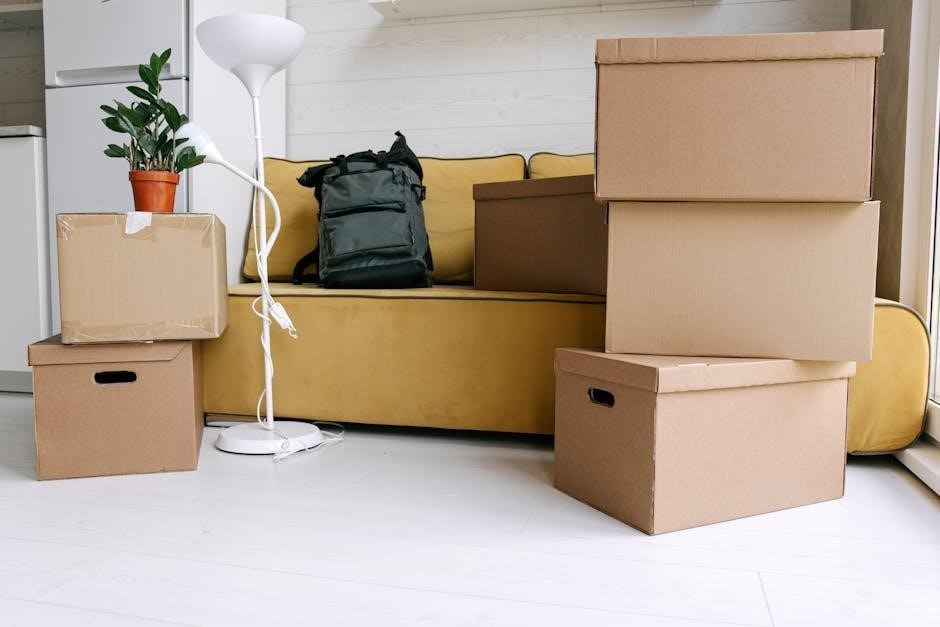
Materials and Tools Required
Wood, metal, or recycled materials are ideal for constructing a durable wheelie bin store. Essential tools include a saw, drill, measuring tape, and screws to ensure a secure and sturdy build.
Wooden vs. Metal Wheelie Bin Stores
When choosing between wooden and metal wheelie bin stores, consider durability, aesthetics, and maintenance. Wooden stores blend naturally with gardens, offering a rustic charm, but require regular treatment to withstand weather. Metal stores are more durable, low-maintenance, and resistant to pests, though they may lack the visual appeal of wood. Both options are covered in wheelie bin storage plans PDF, providing detailed instructions for a DIY project that suits your preferences and needs.
Essential Tools for the Project
To build a wheelie bin store, you’ll need essential tools like a circular saw for cutting wood, a drill for screwing components together, and a hammer for tapping parts into place. A tape measure ensures accurate cuts, while sandpaper smooths rough edges. These tools are often outlined in wheelie bin storage plans PDF, providing a clear guide to prepare and execute your DIY project efficiently.
Recycled and Upcycled Material Options
Consider using recycled or upcycled materials for your wheelie bin store to reduce costs and promote sustainability. Old wooden pallets and fencing timber are excellent options, as they can be repurposed into sturdy frames and cladding. Upcycling not only helps the environment but also adds a unique, rustic charm to your storage unit. Many wheelie bin storage plans PDF include creative ideas for repurposing materials, making your project eco-friendly and budget-conscious. This approach is both practical and environmentally responsible.
Design and Features
Explore creative design options and functional features for your wheelie bin storage unit, such as hinged doors, lift-top lids, and integrated security locks to enhance accessibility and style.
Lift-Top Lids vs. Hinged Doors
When designing your wheelie bin storage unit, choosing between lift-top lids and hinged doors depends on your priorities. Lift-top lids provide easy access while keeping bins concealed, ideal for smaller spaces. Hinged doors offer wider access, making it simpler to move bins in and out, especially for larger units. Consider maintenance, ease of use, and space constraints to decide which option suits your needs best for a functional and practical design.
Adding Security Features
Enhance the security of your wheelie bin storage unit by incorporating locks, reinforced hinges, and durable materials. Adding a lock ensures your bins are protected from theft or vandalism, while sturdy hinges prevent doors from being easily removed. Consider using metal frames or thick wood for added strength. These features not only safeguard your bins but also maintain the overall integrity of your storage unit, ensuring it remains secure and long-lasting.
Incorporating Aesthetics into the Design
Elevate your wheelie bin storage unit’s appearance by incorporating aesthetic elements. Use wooden cladding or paint to match your home’s exterior, ensuring a seamless blend with your garden or yard. Consider adding a sloped roof for a charming look or decorative trim for a polished finish. These design touches enhance both functionality and visual appeal, making your storage unit a stylish addition to your property while keeping your bins neatly concealed.
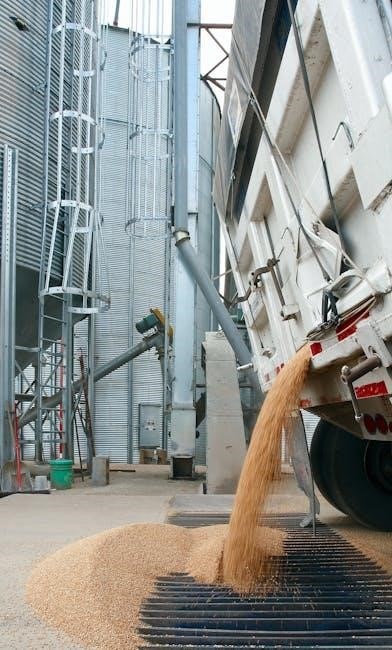
Step-by-Step Construction Guide
Learn to build a wheelie bin storage unit with detailed PDF plans, covering measuring, framing, assembling, and finishing touches for a durable and functional design.
Measuring Your Bins for a Perfect Fit
Accurate measurements are crucial for a seamless fit. Measure the height, width, and depth of your wheelie bins to ensure your storage unit accommodates them perfectly. Consider the space needed for lids to open fully and bins to be easily removed. Double-check your measurements to avoid costly mistakes. Proper sizing ensures easy access and a neat appearance, making your storage solution both functional and aesthetically pleasing. This step guarantees your DIY project will meet your practical needs while enhancing your outdoor space.
Building the Frames and Dividers
Constructing sturdy frames and dividers is essential for a durable and functional storage unit. Begin by cutting the timber according to your measurements, ensuring each piece fits securely. Assemble the side frames and back frames, then attach the dividers to separate the bins. Use screws or nails for a strong bond. Proper alignment and spacing are key to ensuring easy access and organization. This step lays the foundation for a well-structured and practical wheelie bin storage solution.
Assembling the Unit and Attaching Cladding
Once the frames are built, assemble the unit by aligning and securing the sides and back frames together. Use screws or nails to ensure stability. Next, attach the cladding to the exterior, starting from the bottom and working upwards. Ensure the cladding fits tightly to maintain durability and protect against pests. Use weather-resistant materials and secure them firmly to the frame. Proper assembly and cladding will enhance the unit’s appearance and functionality, providing a neat and secure storage solution for your wheelie bins.
Installing Doors and Lids
Attach the doors and lids to your wheelie bin storage unit for easy access. Secure the doors with hinges and add a latch or lock for safety. For lids, use chains to attach them to the bin handles, ensuring they stay open during use. Proper alignment is key for smooth operation. Ensure the doors and lids fit snugly to maintain a neat appearance and protect the bins from pests; This step finalizes the unit, making it functional and secure while keeping your bins hidden and accessible.
Finishing Touches for Durability
Add a waterproof sealant to protect the wood from moisture and extend the lifespan of your storage unit. Apply a durable wood treatment or paint to shield it from weather conditions. Install a sloped roof or add a protective layer to prevent water pooling. Ensure all edges are smooth and secure. For added protection, consider lining the interior with pest-resistant materials; Finally, apply a fresh coat of paint or stain to enhance the appearance and safeguard the structure from the elements.
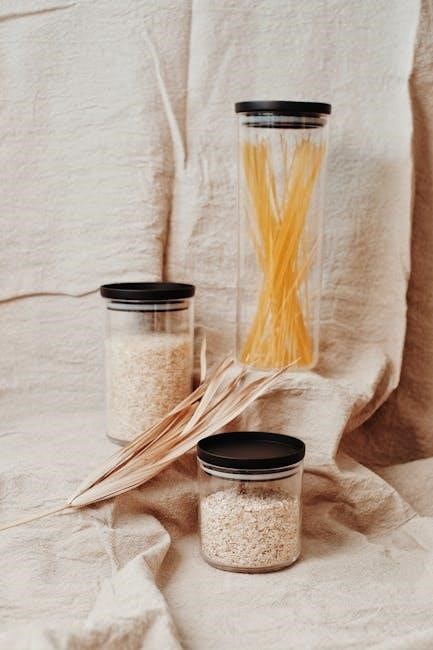
Additional Features to Consider
Enhance functionality by adding wheels for easy mobility or locks for security. Consider ventilation to prevent odor buildup and pest infestation. Custom designs can improve aesthetics and practicality, ensuring your bin storage seamlessly integrates with your outdoor space while maintaining accessibility and durability.
Wheels for Easy Mobility
Adding wheels to your wheelie bin storage unit offers enhanced convenience, allowing you to move it effortlessly for cleaning or rearranging your garden layout. This feature is particularly useful for those with limited space or who frequently reorganize their outdoor areas. Wheeled units maintain stability while providing flexibility, ensuring your bins remain accessible and your space stays tidy. Locking wheels can also be incorporated to prevent unintended movement, offering both mobility and security.
Locks for Added Security
Adding locks to your wheelie bin storage unit ensures your bins are secure from theft or unauthorized access. Consider using durable padlocks or integrated locking mechanisms that blend seamlessly with the design. Locks not only protect your bins but also prevent pests or unwanted scavengers from accessing waste. This feature is especially valuable in high-traffic areas or for homeowners concerned about vandalism. Ensure your storage plan includes lock installation for enhanced safety and peace of mind.
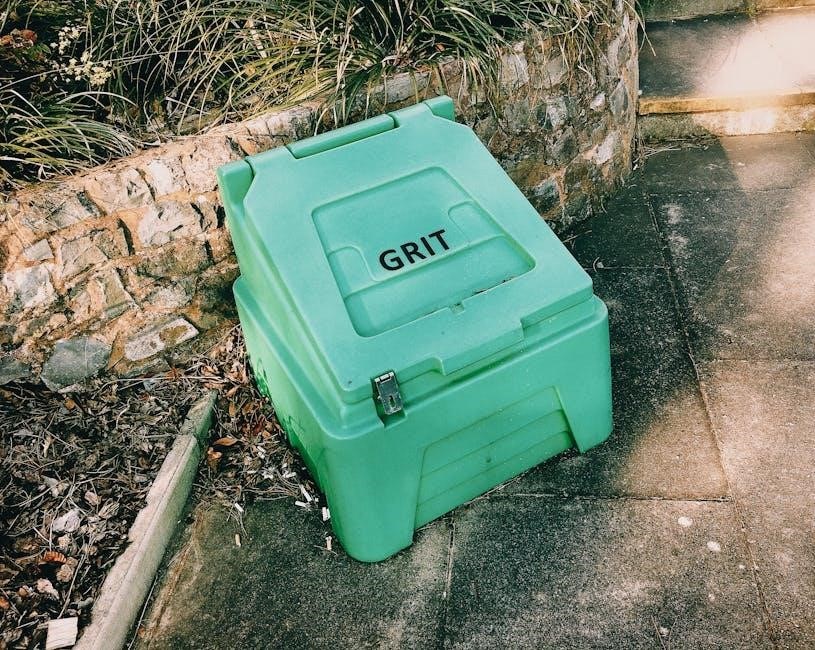
Ventilation and Pest Control
Proper ventilation is essential to prevent odors and moisture buildup in your wheelie bin storage unit. Incorporate vents or mesh panels to ensure airflow and maintain a dry environment. Additionally, consider pest control measures such as sealing entry points and using rodent-proof materials. These features help protect your bins from pests and keep your outdoor space clean and hygienic. A well-designed storage unit with ventilation and pest control ensures long-term functionality and reduces maintenance efforts.
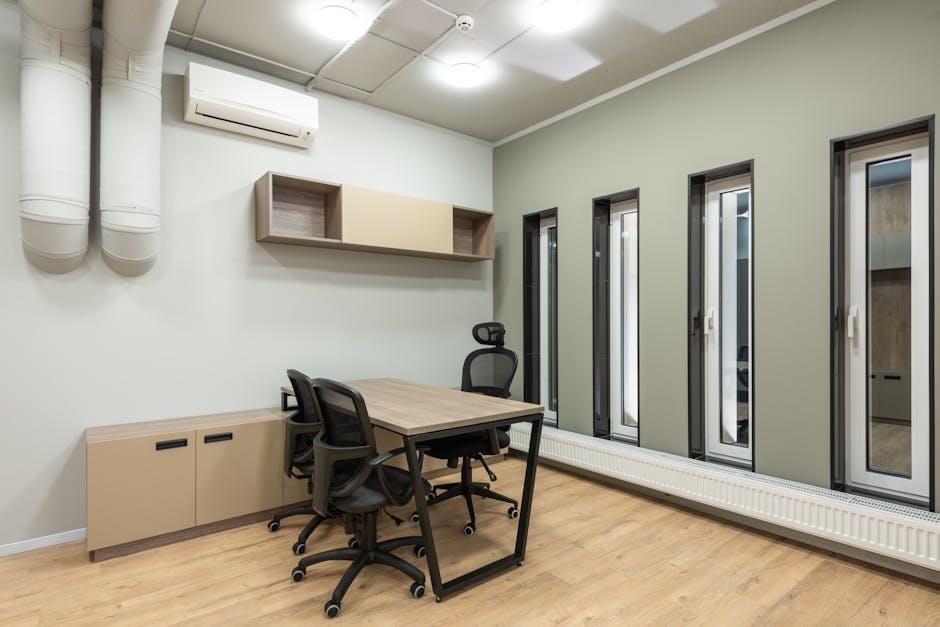
Planning and Preparation
Creating a detailed plan ensures your wheelie bin storage project runs smoothly. Measure your bins, check local regulations, and budget for materials. Gather tools and materials beforehand for a hassle-free build. Proper preparation helps achieve professional results and avoids costly mistakes;
Creating a Detailed Plan
A detailed plan is essential for a successful wheelie bin storage project. Start by measuring your bins accurately to ensure a perfect fit. Include a materials list, cut lists, and step-by-step instructions to streamline the process. Consider space, access, and aesthetics to ensure your design complements your garden. Refer to wheelie bin storage plans PDF for templates and guides. Ensure your plan complies with local regulations and suits your specific needs for a professional-looking result.
Checking Local Regulations
Before building your wheelie bin storage, check local regulations to ensure compliance. Councils often have specific requirements for waste management and storage solutions. For example, Kirklees Council considered bin size reductions, while other areas may enforce particular design standards. Consult your local planning department to verify guidelines and obtain necessary permits. This step ensures your project aligns with community standards and avoids potential fines or disputes. Refer to resources like local planning documents for detailed information.
Budgeting for Materials
Budgeting for materials is crucial to ensure your wheelie bin storage project remains cost-effective. Consider the cost of wood, metal, or recycled materials, and compare suppliers for the best prices. Detailed plans often include materials lists, helping you estimate expenses accurately. Allocate funds for essential tools and hardware, and consider contingencies for unexpected costs. Using recycled or upcycled materials, like pallet wood, can significantly reduce expenses while maintaining durability and functionality. Plan wisely to stay within your budget and achieve a high-quality result.
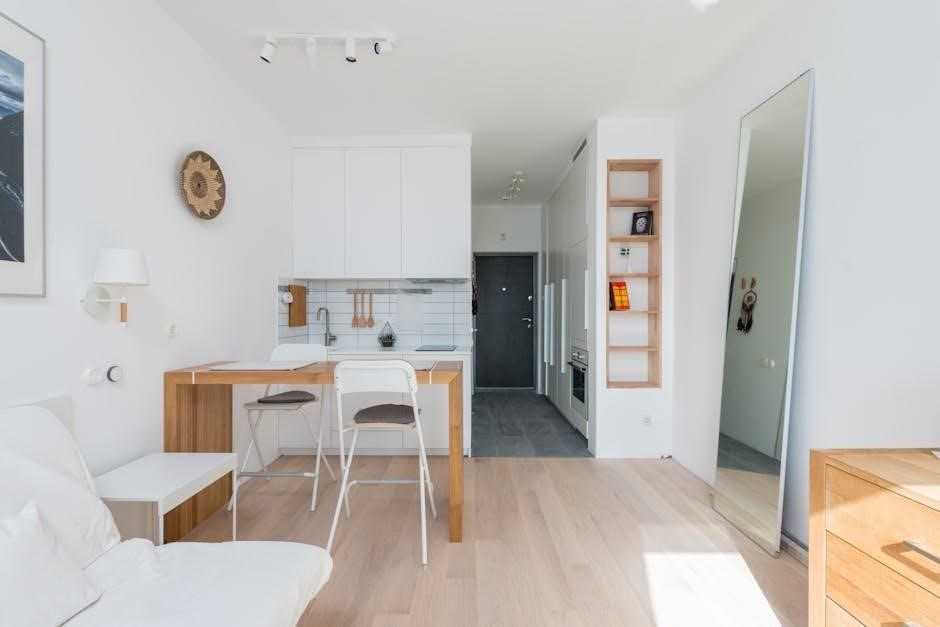
Free PDF Resources and Templates
Download detailed wheelie bin storage plans PDF for free, featuring step-by-step instructions, materials lists, and templates. Find these resources on DIY websites or online shops like Etsy for easy, affordable solutions to hide your bins stylishly.
Where to Find Free Plans Online
Find free wheelie bin storage plans PDF on platforms like Etsy, DIY blogs, and Instructables. Websites such as thediyfix.com and planning.org.uk offer detailed guides and templates. Search for “wheelie bin storage plans PDF” to discover a variety of free resources, including step-by-step instructions and materials lists. Many creators share their designs on these platforms, making it easy to download and print your preferred plan for a stylish and functional bin storage solution.
Downloading and Printing Templates
Download free wheelie bin storage plans PDF from platforms like Etsy, Instructables, or DIY blogs. Ensure your printer uses standard paper sizes (A4 or Letter) for clarity. Print templates on cardstock for durability or glue them to cereal boxes for sturdier use. Follow the instructions carefully to avoid errors during assembly. Many plans include detailed drawings, materials lists, and step-by-step guides, making the construction process straightforward and efficient for DIY enthusiasts.
DIY vs. Pre-Built Options
Compare DIY and pre-built solutions for wheelie bin storage. DIY offers cost savings and customization, while pre-built options provide convenience and quick installation, catering to different preferences and budgets.
Pros and Cons of Each
DIY solutions offer cost savings and customization, allowing you to tailor the design to your space. However, they require time and effort to build. Pre-built options provide convenience and durability, with quick installation, but may be more expensive and offer less flexibility. Consider your budget, skills, and preferences when choosing between these options for your wheelie bin storage needs. Each has its advantages, so weigh them carefully.
Choosing the Best Option for You
When selecting between DIY and pre-built wheelie bin storage solutions, consider your space, budget, and preferences. Assess the number of bins, available space, and desired features like lift-top lids or hinged doors. If you’re handy, a DIY plan offers customization and cost savings. Pre-built units provide convenience and durability but may lack flexibility. Evaluate your needs, check local regulations, and ensure the design aligns with your home’s aesthetics for a practical and lasting solution.
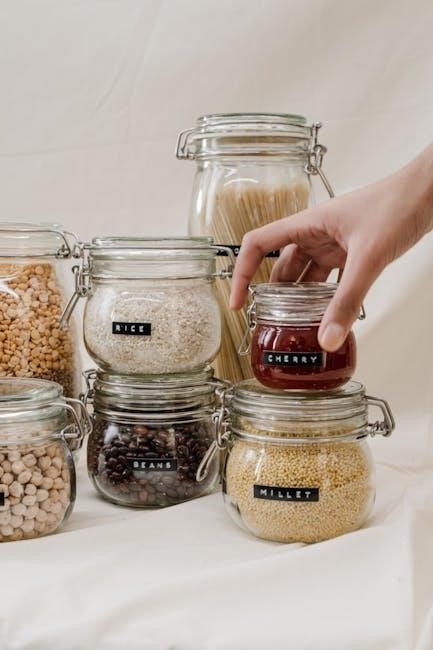
Safety Tips and Maintenance
Ensure stability by securing the unit to the ground and regularly cleaning it. Check for damage, pests, or wear to maintain functionality and prevent hazards over time.
Ensuring Stability and Safety
Ensure your wheelie bin storage unit is stable and secure to prevent tipping. Anchor it to the ground for added stability, especially in windy areas. Regularly inspect for damage or pest infestation to maintain safety and durability. Keep the area around the unit clean to avoid attracting pests and ensure easy access. Properly align lids and doors to prevent accidental opening, and secure them with sturdy hinges and latches for long-term reliability.
Regular Maintenance Tips
Regularly clean your wheelie bin storage unit to prevent grime buildup. Check for pest infestations and address them promptly with non-toxic solutions. Lubricate hinges and locks to ensure smooth operation. Inspect for any signs of wear or rot and repair promptly to maintain structural integrity. Keep the surrounding area clear to avoid debris accumulation. Regular maintenance ensures your storage unit remains functional, secure, and blends seamlessly with your garden’s aesthetic.
Building a wheelie bin storage unit is a simple yet effective project to hide your bins and keep your garden looking tidy and organized. It’s a great way to transform your outdoor space while maintaining functionality and style.
Final Thoughts on Building Your Storage Unit
Constructing a wheelie bin storage unit is a rewarding DIY project that enhances your garden’s appearance while keeping your bins organized. With detailed PDF plans, you can create a functional and stylish solution tailored to your needs. Whether you choose wood or metal, ensure durability and aesthetics by following step-by-step guides. This project not only improves your outdoor space but also adds value to your property with a neat and tidy setup for your waste management.

